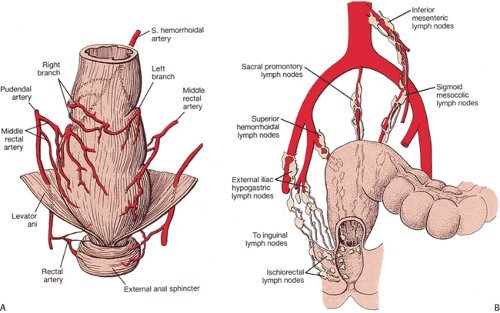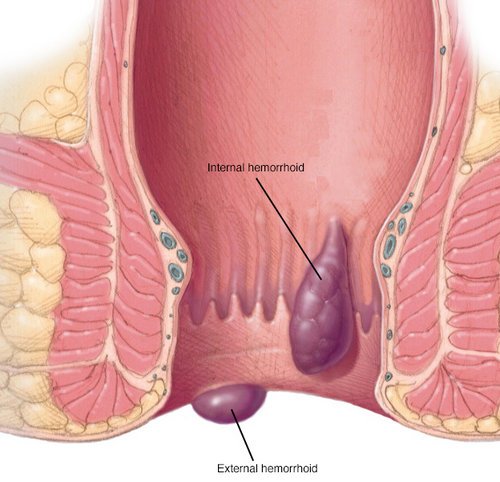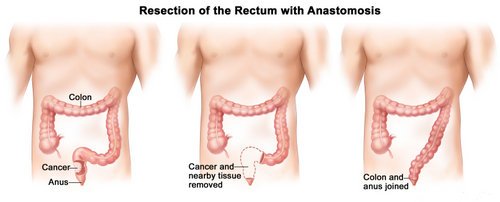Leaky Anus (Anal Leakage)
Last reviewed by Dr. Raj MD on January 12th, 2022.
Fecal incontinence in laymen’s terms has been called leaky anus. There are many causes and therefore a variety of treatments for fecal incontinence.
Most adults will not ever experience leaky anus and if they do it would only be during a severe bout of diarrhea.
Fecal incontinence is not a diagnosis but a symptom of underlying processes or another diagnosis. In this article, you will learn about the anatomy of the anus as well as possible causes and treatments for fecal incontinence or leaky anus. (1)
Anal anatomy
The anal canal is the opening which controls the passage of the final stool. It is supported by the internal and external sphincter. Its functions are to hold any stool in the rectum until appropriate, alert the brain that there is stool there and to release the stool when the person decides it is time.
It has its own blood supply and lymphatic system due to the constant muscular control needed. (8,11)

Image 1 : This image shows the basic anatomy of the anal area.
Picture Source : www.mayoclinic.org

Photo 2 : In the left section or section A you can see the detailed vascular system which feeds into the rectum and the anal canal. The right section or B section shows the necessary lymph nodes that work alongside the vascular system for the rectal and anal areas.
Image Source : abdominalkey.com
What is Anal leakage?
Anal leakage is fecal incontinence, basically, it is when the person cannot stop themselves from having a bowel movement. Usually, they are unable to get to the bathroom in time before the movement begins. Anal leakage most likely will also be seen with diarrhea, constipation or extreme bloating and gas. (1)
What causes Anal leakage?
May things could cause anal leaking. Some of the most common and nonspecific causes are:
- Muscle Damage
- Loss of capacity in the rectum
- Nerve Damage
- Recent surgery to the lower intestine
- Constipation
- Prolapsed rectum
- Diarrhea
- Loss of stretch in the rectum
- Poor nutrition
- Inactivity (1, 8)
Some things that may be more specific and known to cause fecal incontinence are as follows:
Proctitis and Anusitis
This is simply inflammation of the mucosal lining near the rectum and anus. This can cause bleeding and bowel changes. Usually, a sense of urgency is noted before bowl movements. If the inflammation is due to infection antibiotics will be prescribed to assist in healing. (12)
Figure 3 : This image shows the redness and swelling of the inner lining of the anus.
Picture Source : img.medscapestatic.com
Hemorrhoids
Hemorrhoids are swollen veins in the anal and rectal area. They are caused by heavy lifting or straining during a bowel movement. They have many types of treatments ranging from herbal medication to surgery. They may be accompanied by pain after bowel movements and speckled bleeding noted around the stool. (5,10)

Image 4 : This image was chosen because it shows both internal and external hemorrhoids which are simply the anal or rectal blood vessels which are swollen and weak.
Photo Source : www.mayoclinic.org
Anal fissure
This is just a small opening or tears in the anal wall. This happens due to constipation or repeated large bowl movements. It is usually accompanied by bleeding or blood found in the stool. The pain can be severe and last several hours. (3,9, 10)

Picture 5 : This is an excellent representation of an anal fissure.
Photo Source : www.fascrs.org
Anal fistula
This is basically when there is an opening between the skin and the muscle of the anus. This is usually due to an infection that started in the anal area. In most cases, surgery is needed. (4)

Figure 6 : How and anal fistula appears.
Picture Source : www.zadehsurgical.com
Cancer
Cancer which happens in the anal area. Can be accompanied by rectal bleeding and pain. Treatment would be removal and or chemotherapy or radiation. (4)

Image 7: This image not only shows cancer in or near the anus but also shows how the removal of the rectum will look.
Picture Source : www.ncbi.nlm.nih.gov
How will the doctor make a diagnosis?
There could be various tests performed to decide the diagnosis. In all cases, your doctor will take down a medical history. Be sure to go prepared with a list of things such as you regular diet and exercise as well as familiar histories of digestive disorders. Also, a physical exam and palpitation will most likely be necessary. Your doctor may ask you many questions during your evaluation such as:
- Amount and frequency of incontinence
- Is there warning or urge
- Does it affect your daily life
- When did it start
- Can you control gasses
- Familial history of similar issues (1,8)
The following are some of the medical exams that may be done as well:
- Digital rectal exam
- Anal manometry
- Balloon expulsion test
- Anorectal ultrasonography
- Proctography
- Colonoscopy
- Proctosigmoidoscopy
- Magnetic resonance imaging (1,8)
Changes in Anal leakage:
Clear anal leakage
How to stop Anal leakage
Here are a few risk factors for fecal incontinence:
- Age
- Childbirth
- Nerve damage
- Physical disability (1)
- Dementia
Depending on the specific diagnosis here are a few of the most common treatments for fecal incontinence.
- Bulk laxatives
- Anti-diarrheal drugs
- Injectable bulking agents
- Anal leakage pads
- Dietary changes
If the issue is only in the bowel control the following therapies may be prescribed.
- Biofeedback
- bowel training
- SNS (sacral nerve stimulation)
- Posterior tibial nerve stimulation (PTNS/TENS)
- Vaginal balloon
Some surgeries have been done to help treat fecal incontinence such as:
- Replacement of rectal prolapse
- Removal of hemorrhoids
- Sphincter repair
- Sphincter replacement
- Colostomy
- Sphincteroplasty (1, 8, 9)
References:
- http://www.mayoclinic.org/diseases-conditions/fecal-incontinence/symptoms-causes/dxc-20166883
- http://www.mayoclinic.org/diseases-conditions/anal-fistula/basics/definition/con-20032352
- http://www.mayoclinic.org/diseases-conditions/anal-fissure/home/ovc-20168229
- http://www.mayoclinic.org/diseases-conditions/anal-cancer/home/ovc-20233197
- http://www.mayoclinic.org/diseases-conditions/hemorrhoids/symptoms-causes/dxc-20249175
- https://www.ncbi.nlm.nih.gov/pubmedhealth/PMH0009430/
- https://www.ncbi.nlm.nih.gov/pubmedhealth/PMH0086814/pdf/PubMedHealth_PMH0086814.pdf
- https://www.niddk.nih.gov/health-information/digestive-diseases/bowel-control-problems-fecal-incontinence
- http://emedicine.medscape.com/article/1582358-overview
- http://emedicine.medscape.com/article/196297-overview
- http://emedicine.medscape.com/article/1990236-overview
- http://emedicine.medscape.com/article/192910-treatment#d9